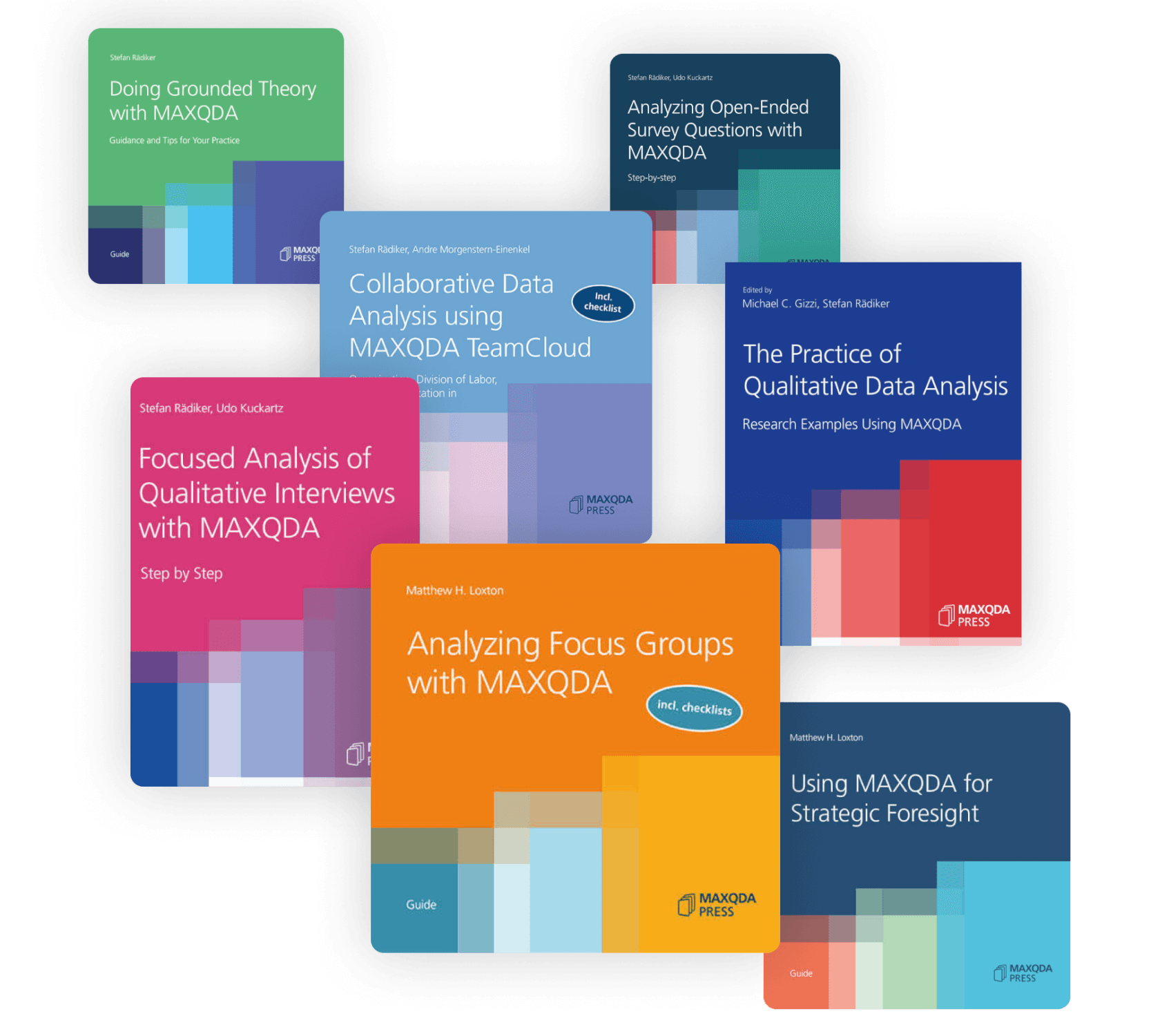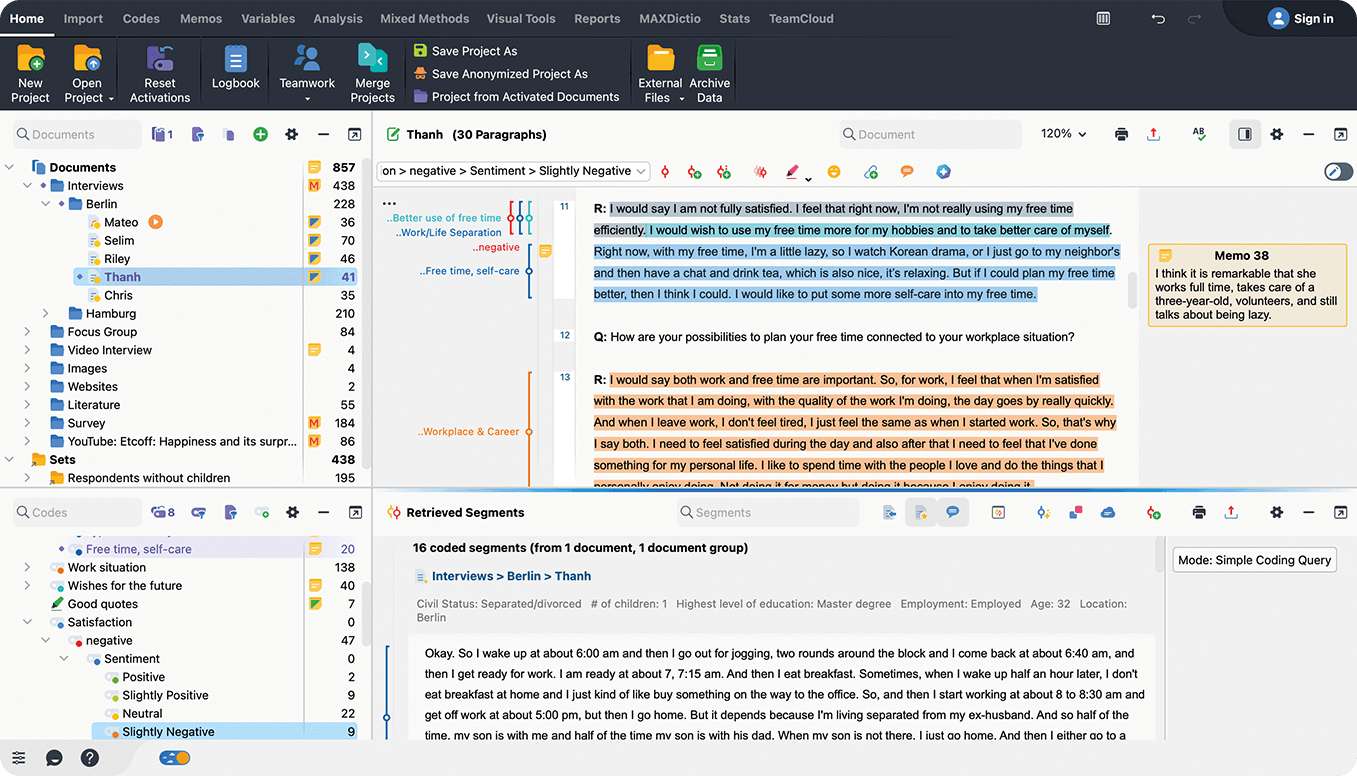The #1 qualitative data analysis software with the best AI integration
MAXQDA streamlines your data analysis with automatic transcription, powerful analysis tools, ease of use, and smart AI integration. Explore the possibilities now.
Unlock the full potential of your qualitative research with the leading Qualitative Data Analysis Software
MAXQDA is the most user-friendly choice for your qualitative data analysis needs and is considered as one of the best qualitative data analysis software. It is designed to work with a wide range of data types, including text, audio, and video, and offers a variety of powerful tools for qualitative data analysis. Whether you’re looking to code and classify data, visualize patterns and themes, or perform mixed-methods, or quantitative content analysis, MAXQDA makes it easy to get the insights you need for your qualitative data analysis.
Your data
Your codes
Document viewer
Your analysis
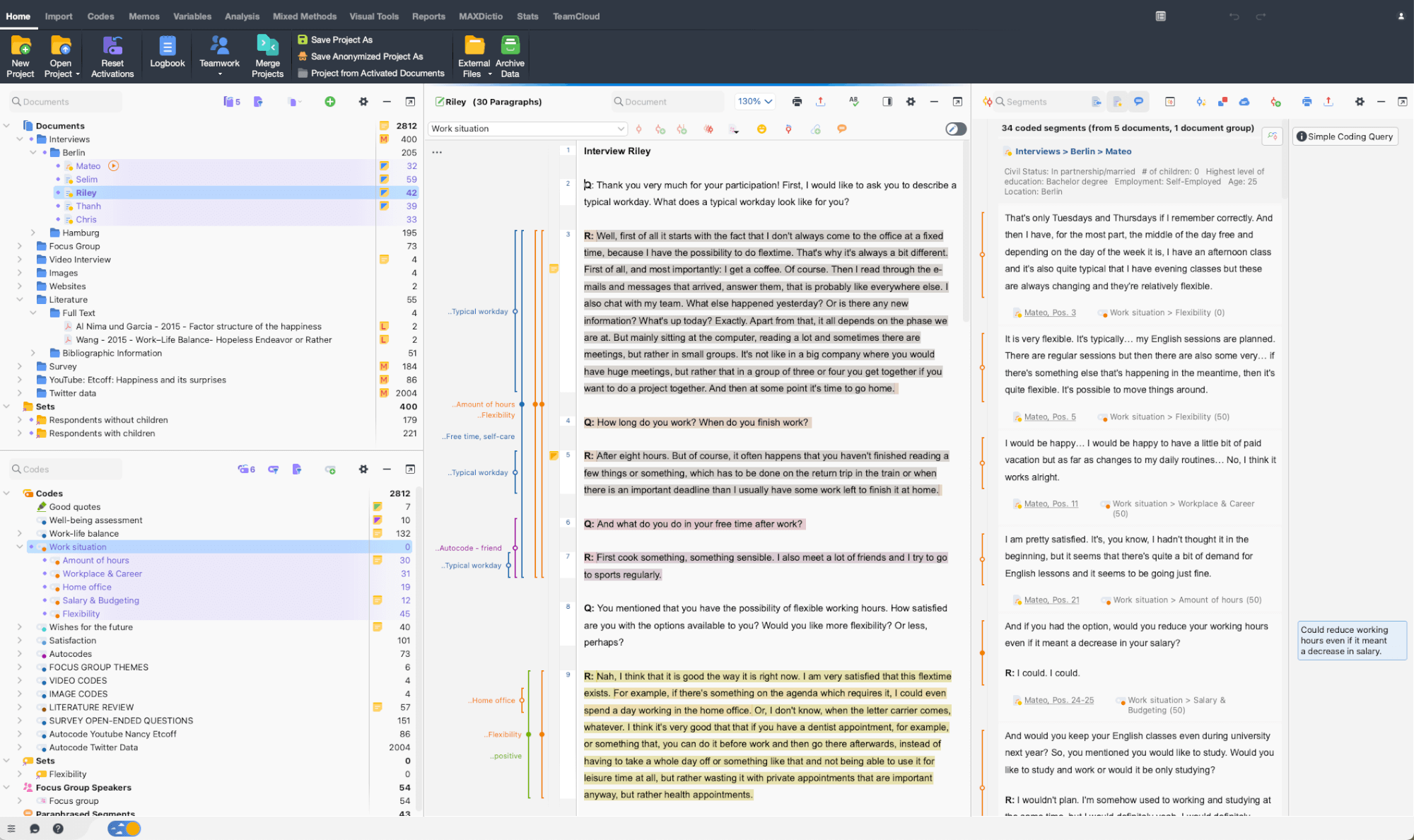
All-in-one Qualitative Analysis Software
developed by and for researchers
MAXQDA is the go-to software for managing and analyzing your qualitative research. Developed by and for researchers, it offers a wide range of powerful tools for managing your research project, analyzing data and collaborating with team members. With its user-friendly interface, step-by-step free tutorials and comprehensive documentation, it’s the perfect choice for both experienced and novice qualitative researchers. MAXQDA streamlines the qualitative data analysis process, giving you more time to focus on interpreting and understanding your data, rather than struggling with complicated software.
Developed by and for researchers – since 1989








Having used several qualitative data analysis software programs, there is no doubt in my mind that MAXQDA has advantages over all the others. In addition to its remarkable analytical features for harnessing data, MAXQDA’s stellar customer service, online tutorials, and global learning community make it a user friendly and top-notch product.
Sally S. Cohen – NYU Rory Meyers College of Nursing
Qualitative Data Analysis is Faster and Smarter with MAXQDA
MAXQDA makes qualitative data analysis faster and easier than ever before. It offers a wide range of analysis methods, including Grounded Theory, qualitative content analysis, group discussions, discourse analysis, Mixed Methods, and case and field studies. Its user-friendly 4-Window Interface provides quick access to powerful tools and functions, streamlining the data analysis process. Additionally, MAXQDA is the only leading Qualitative Data Analysis software that is 100% identical on Windows and Mac, providing a consistent and seamless analysis experience.
All-in-one Qualitative Data Analysis Software
MAXQDA is the ultimate qualitative data analysis software, with its ability to seamlessly import all types of qualitative data making it the perfect tool for managing and analyzing your research project. With MAXQDA, you can easily import a wide range of data types such as text, interviews, focus groups, PDFs, web pages, spreadsheets, articles, e-books, bibliographic data, videos, audio files, and even social media data. Organize your data into groups, link relevant quotes to each other, use MAXQDA’s powerful tools to facilitate your qualitative analysis, and share and compare work with your team members. The project file stays flexible allowing you to expand and refine your category system as you go, ensuring your research is tailored to your needs.

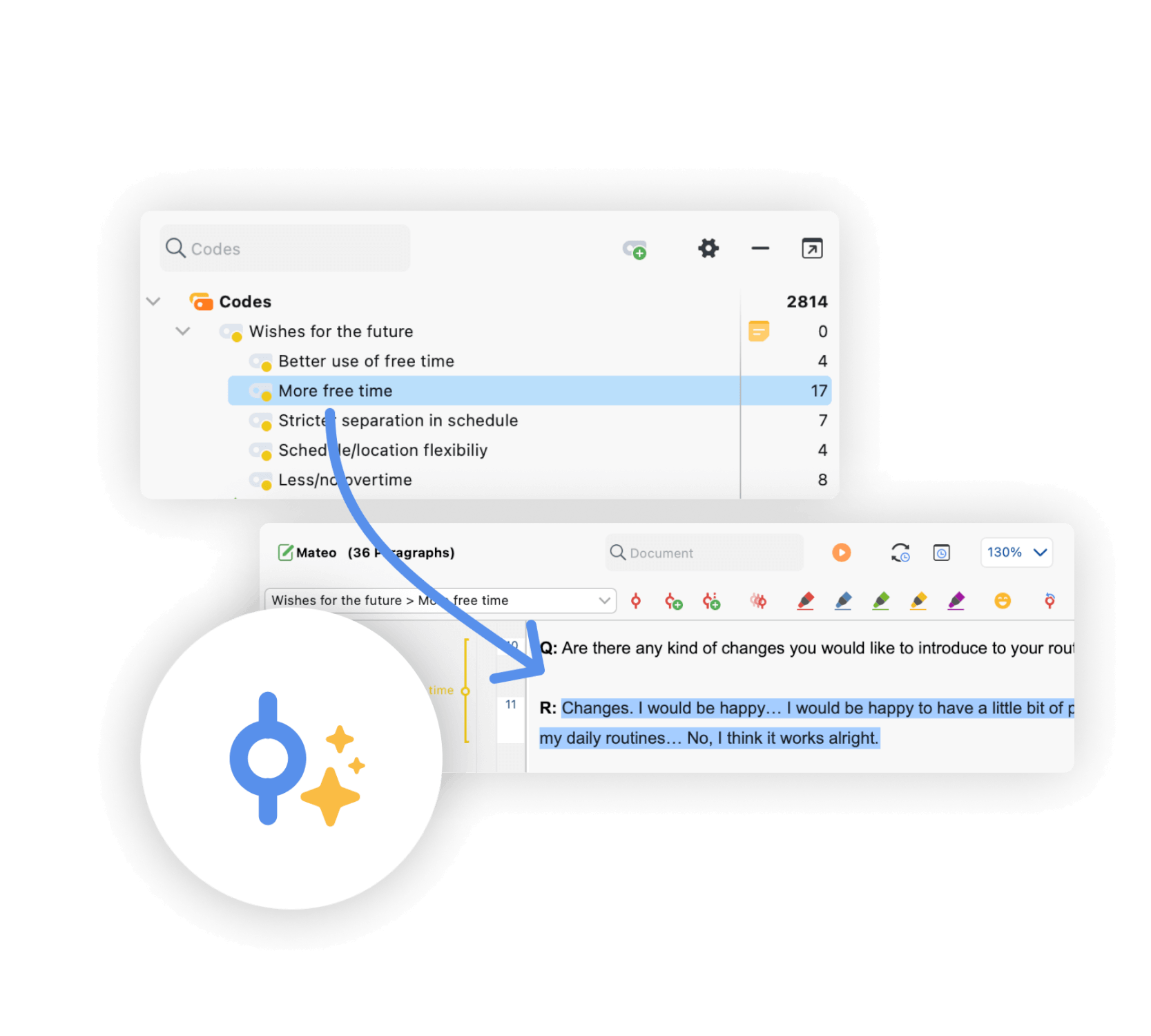
User-Friendly Tools for Qualitative Coding
Utilize a variety of tools such as codes, colors, symbols, and emoticons to mark important information in your data. With MAXQDA, you can create codes with just one click and apply them quickly via drag & drop. The software’s Text Search tools allow you to explore your material without coding or reading them first. You can also search for keywords and automatically code them with just a few clicks. Organize your thoughts and theories in memos that can be linked to any element of your project. Retrieve your coded segments with one click or use MAXQDA’s powerful summary tools to test and develop new theories. Make the most of your time with MAXQDA, the #1 qualitative analysis software
Organize Your Qualitative Data with MAXQDA’s Memo Tools
As you perform your qualitative analysis, MAXQDA allows you to capture ideas and insights by creating memos to store research questions, objectives, and paraphrasing passages into your own words. The software’s memo feature also allows for easy creation of audit trails by attaching memos like post-it notes to text passages, texts, document groups, images, audio/video clips, and codes. With the unique MAXQDA memo manager and lexical search function, you have immediate access to every single memo at any time, making it easy to stay organized and on top of your research. With MAXQDA, the leading qualitative analysis software, your data organization is made simple.

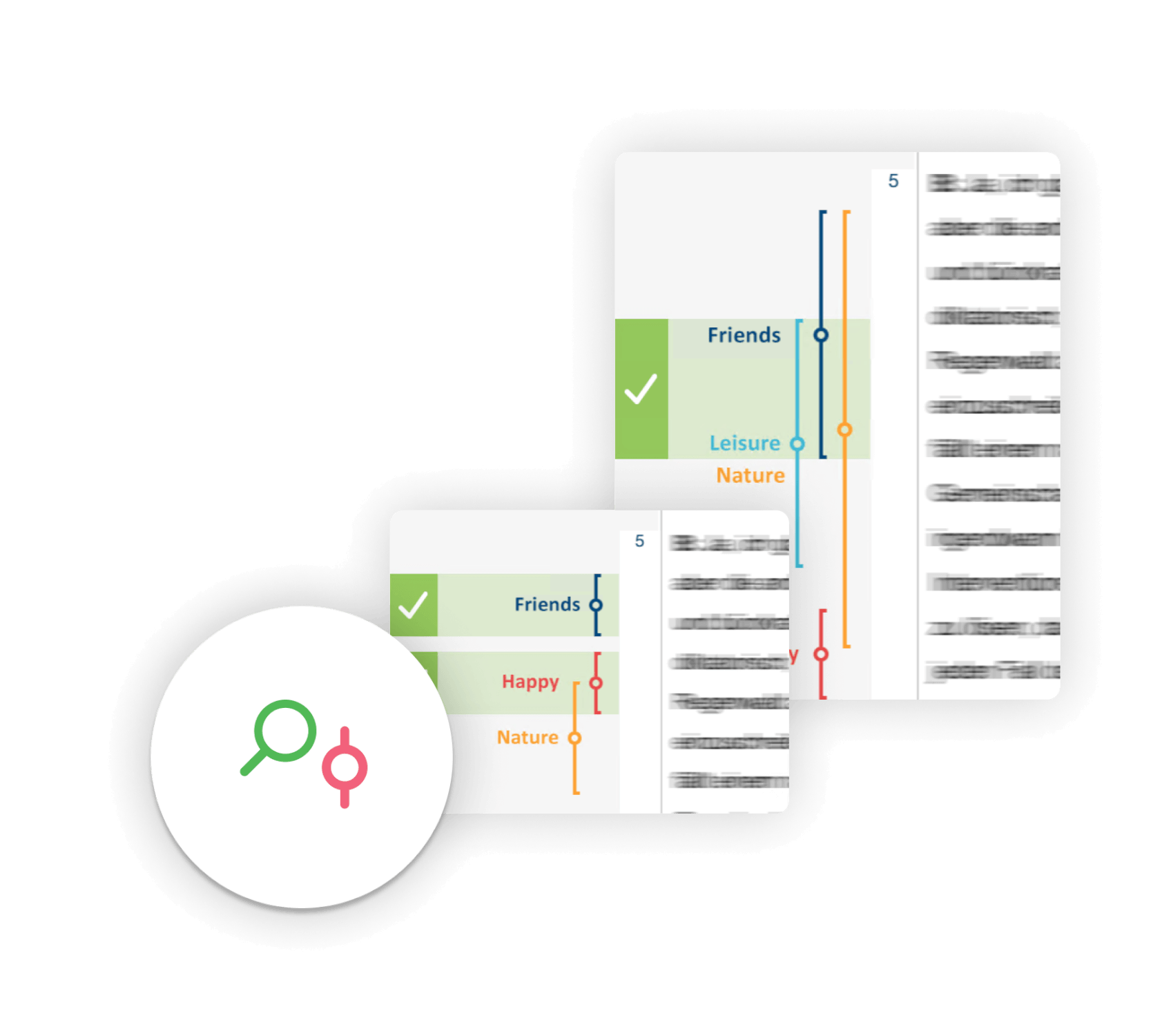
Text Search and Autocoding Tools
When analyzing large amounts of text for a qualitative study, MAXQDA’s Text Search tools can be of great help. These tools allow you to explore your documents without having to manually read or code them first, by searching for keywords or concepts that are important to your analysis. With just a few clicks, you can automatically code these keywords, creating document variables that can be used for searching and retrieving specific segments. Additionally, MAXQDA’s powerful Coding Query feature allows for in-depth analysis of the combination of activated codes in various ways, making it a valuable tool in the qualitative data analysis software toolkit.
Visual Text Exploration
When it comes to conducting a qualitative data analysis, the software you choose can make a big difference in the ease and efficiency of your research. MAXQDA is a powerful and versatile qualitative data analysis software that is well-suited for analyzing both small and large sets of text. The software’s Interactive Wordtree feature is a particularly powerful tool, visualizing all the combinations that lead to or from any word of your choice and providing a detailed display of frequencies. This feature can provide new and fascinating perspectives even on texts you know well and allows for a comprehensive overview of those you don’t. Furthermore, MAXQDA’s Text Search tools and Coding Query feature allow you to search for keywords, concepts or certain segments and analyze the combination of activated codes in different ways.
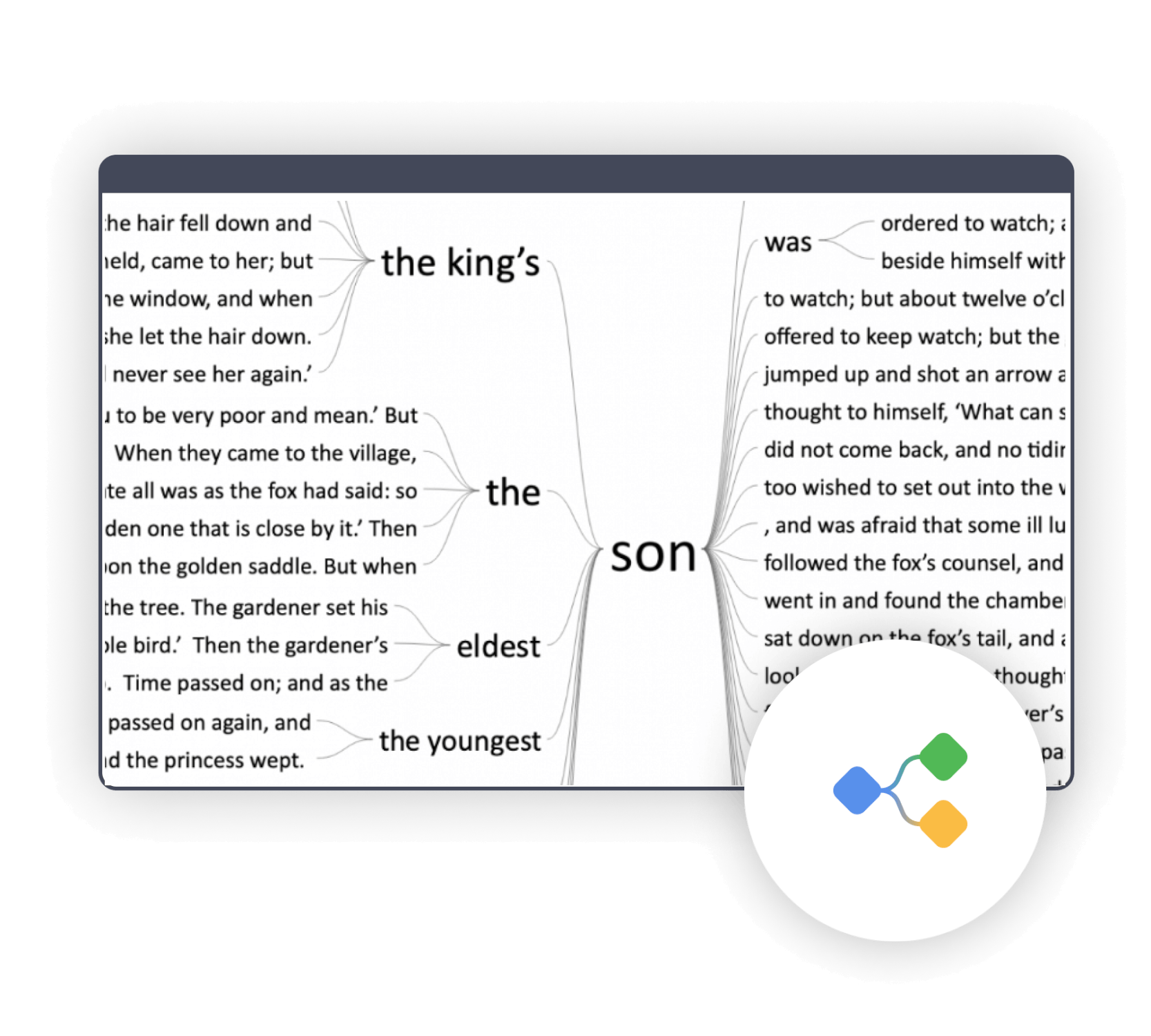
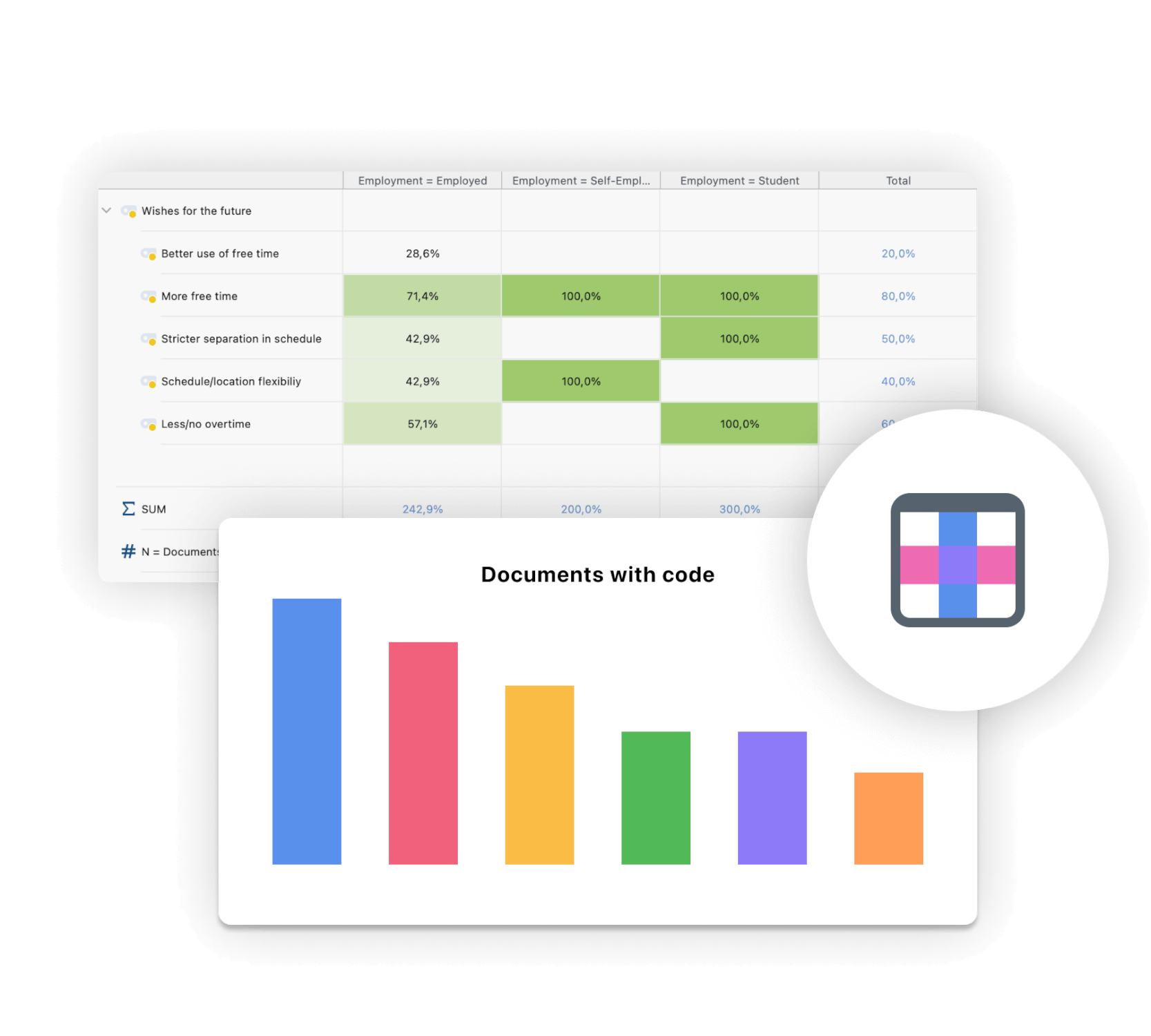
A lot more than just a Qualitative Data Analysis Software
Quantitative aspects can also be relevant in qualitative data analysis, and MAXQDA as a leading qualitative data analysis software, offers a wide range of tools specifically designed to facilitate quantitative content analyses. These include tools for word frequency analysis, visual text exploration, content analysis, vocabulary analysis, and dictionary-based analysis that help researchers analyze terms and their semantic contexts in a quantitative way. With MAXQDA, you can easily display frequencies of individual words or word combinations in tables, visualize them in the Interactive Wordtree, or use the Keyword-in-Context function to transfer the textual contexts of selected words into a clear table, among other features.
Visualize your qualitative data
MAXQDA’s wide range of visual tools for qualitative data analysis allows you to create stunning visualizations to analyze your material and gain insights from your data. From codelines to code clouds and concept maps, these tools provide a range of options to help you explore and understand your data in new ways. With the interactive connection between your visualizations and your MAXQDA data, you can easily switch between different perspectives and never lose sight of the big picture. Additionally, you can export your visualizations in various formats to enrich your final report and share your findings with others. These visual tools in MAXQDA make it a powerful software for qualitative data analysis and mixed methods.
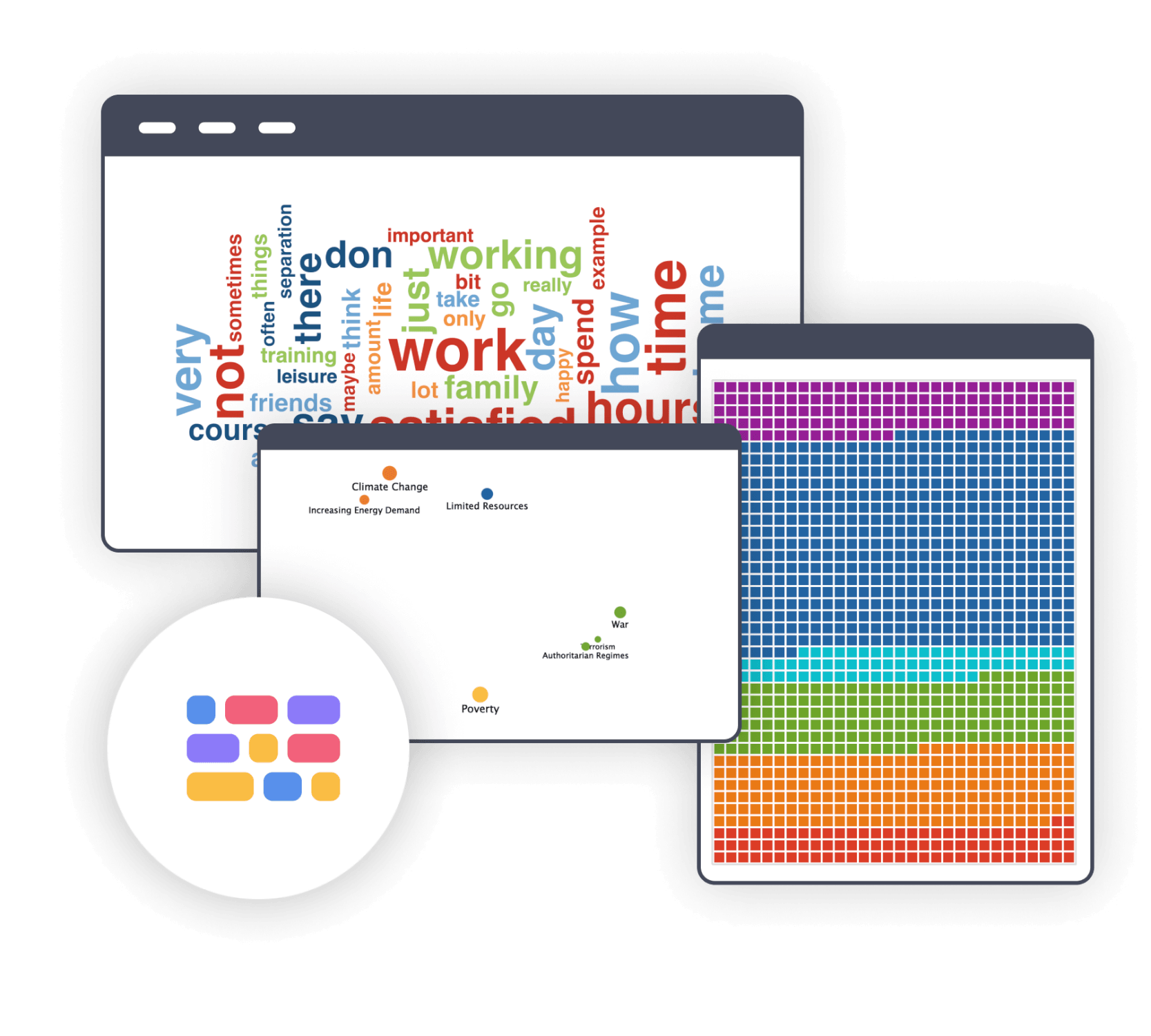

AI Assist: Qualitative data analysis software meets AI
AI Assist – your virtual research assistant – supports your work with various tools. Besides automatic transcription of audio and video recordings in different languages, AI Assist simplifies your work by automatically analyzing and summarizing elements of your research project and by generating suggestions for subcodes. No matter which AI tool you use – you can customize your results to suit your needs.
Free tutorials and guides on qualitative data analysis software
MAXQDA offers a variety of free learning resources for qualitative data analysis, making it easy for both beginners and advanced users to learn how to use the software. From free video tutorials and webinars to step-by-step guides and sample projects, these resources provide a wealth of information to help you understand the features and functionality of MAXQDA. For beginners, the software’s user-friendly interface and comprehensive help center make it easy to get started with your data analysis, while advanced users will appreciate the detailed guides and tutorials that cover more complex features and techniques. Whether you’re just starting out or are an experienced researcher, MAXQDA’s free learning resources will help you get the most out of your qualitative data analysis.
